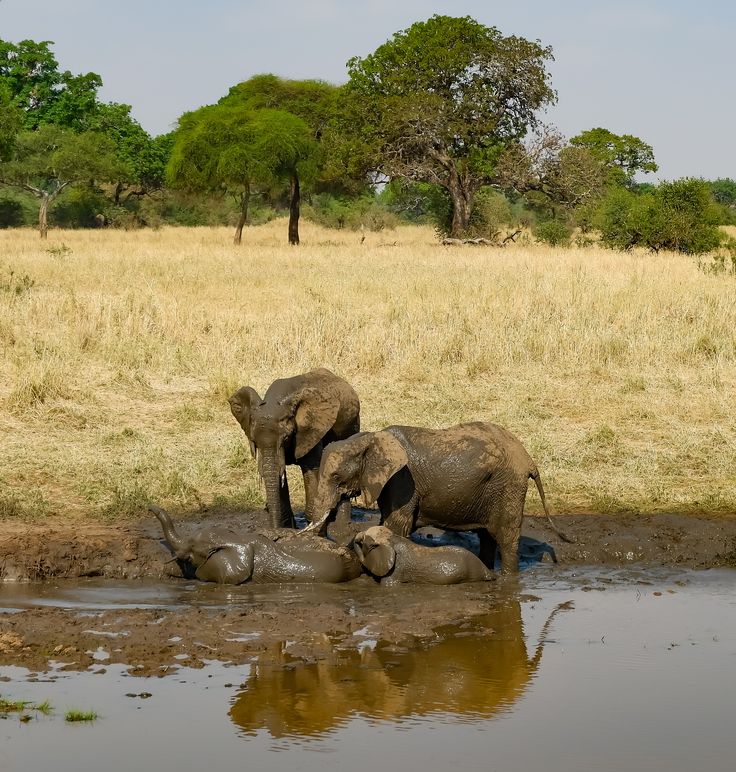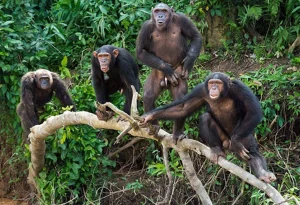Tanzania stands as one of Africa’s most captivating travel destinations, offering a unique combination of wildlife, adventure, culture, and stunning natural landscapes. From the sweeping plains of the Serengeti to the pristine beaches of Zanzibar, Tanzania has something to offer every traveler. Its diverse ecosystems, rich cultural heritage, and world-class safari experiences make it a must-visit country for anyone seeking adventure, relaxation, or a deeper connection with nature. Why Visit Tanzania
Why should I visit Tanzania?
Tanzania attracts visitors for its unmatched wildlife, dramatic landscapes, and authentic cultural experiences. The country hosts some of the world’s most famous national parks, including the Serengeti and Ngorongoro Crater, where travelers can witness the Big Five—lions, elephants, leopards, rhinos, and buffalo—in their natural habitats.
Tanzania also boasts Mount Kilimanjaro, Africa’s highest peak, offering trekking adventures for all levels of experience. Its coastline, particularly Zanzibar, features white sandy beaches, turquoise waters, and rich marine biodiversity. Combined with a welcoming culture and well-established safari infrastructure, Tanzania provides a safe, enriching, and unforgettable travel experience.
What are the top tourist attractions in Tanzania?
Tanzania is home to a diverse range of attractions. Serengeti National Park offers sweeping plains and is famous for the annual Great Migration of wildebeest and zebras. Ngorongoro Crater, a UNESCO World Heritage Site, provides a concentrated wildlife experience in a natural volcanic caldera. Why Visit Tanzania
Other notable parks include Tarangire National Park, known for its large elephant herds and baobab trees, and Selous Game Reserve, which offers remote wilderness safaris with fewer crowds. Ruaha National Park provides rugged landscapes and excellent predator viewing. In addition to wildlife, Zanzibar offers pristine beaches and historical Stone Town, while Lake Manyara and the Usambara Mountains provide scenic beauty and birdwatching opportunities.
What wildlife can I see in Tanzania?
Tanzania offers one of the richest wildlife experiences in Africa. Visitors can see the Big Five—lions, elephants, leopards, rhinos, and buffalo—primarily in the Serengeti, Ngorongoro Crater, and Tarangire. During the Great Migration, millions of wildebeest, zebras, and gazelles traverse the Serengeti plains, attracting predators and creating a spectacular wildlife spectacle.
Tanzania also hosts rare species such as the African wild dog, cheetah, and Rothschild giraffe. Birdwatchers will find over 1,100 bird species, including flamingos, fish eagles, and endemic species in highland forests. Water-based reserves like Lake Manyara and Selous provide opportunities to observe hippos, crocodiles, and a variety of waterfowl.
When is the best time to visit Tanzania?
The best time to visit Tanzania depends on the experience travelers seek. Dry season months (June to October) provide optimal conditions for wildlife viewing as animals congregate near water sources and the landscape is less dense. This period coincides with the Great Migration in northern Serengeti and is ideal for safari photography.
The short rainy season (November to December) and long rainy season (March to May) offer fewer crowds and lush, green landscapes, though some roads may be less accessible. Zanzibar is best visited from June to October when rainfall is minimal and waters are calm for snorkeling and diving. Planning travel according to seasonal wildlife and weather patterns ensures the best possible experience.
Can you climb Mount Kilimanjaro in Tanzania?
Yes, Tanzania is home to Mount Kilimanjaro, Africa’s highest peak at 5,895 meters. It offers trekking routes for all levels, from beginners to experienced climbers. Popular routes include Marangu, Machame, Lemosho, and Rongai, each offering unique landscapes, including rainforest, alpine desert, and volcanic terrain.
Guided treks generally take 5–9 days, allowing climbers to acclimatize and increase their chances of reaching the summit. Kilimanjaro treks combine adventure, fitness, and breathtaking panoramas, making it a bucket-list destination for travelers worldwide.
Is Zanzibar worth visiting?
Absolutely. Zanzibar, an archipelago off Tanzania’s coast, combines pristine beaches, turquoise waters, and rich history. Its capital, Stone Town, is a UNESCO World Heritage Site featuring winding alleys, historic buildings, and vibrant markets.
Visitors can enjoy snorkeling, diving, sailing, and spice farm tours, all while experiencing Swahili culture. Zanzibar is also a popular destination for honeymooners and luxury travelers seeking relaxation alongside adventure.
What cultural experiences are available in Tanzania?
Tanzania offers immersive cultural experiences. Travelers can visit Maasai villages to learn about traditional practices, ceremonies, and craftsmanship. Chaga and Hadza communities provide insight into rural lifestyles and ancient hunting traditions.
In Zanzibar, Swahili culture comes alive through architecture, cuisine, music, and festivals. Cities like Arusha and Moshi also offer local markets, museums, and cultural centers where visitors can engage with Tanzanian heritage. Combining wildlife and cultural tours provides a well-rounded understanding of the country.
How safe is it to travel to Tanzania?
Tanzania is generally safe for tourists, especially in established safari areas and popular tourist regions. Safari lodges, national parks, and Zanzibar resorts maintain high security standards. Travelers are advised to follow standard safety measures, such as avoiding remote areas at night, securing valuables, and using licensed guides.
Health precautions include yellow fever vaccination (required for some arrivals), malaria prophylaxis, and routine travel insurance. With careful planning, Tanzania offers a safe and enjoyable experience for solo travelers, families, and groups.
What is the cost of traveling to Tanzania?
Travel costs vary depending on the type of trip. Budget travelers may spend USD 50–100 per day on accommodation and food. Mid-range safari packages typically cost USD 200–400 per day, including park fees, guided tours, and lodging. Luxury safaris can exceed USD 1,000 per day, offering private guides, high-end lodges, and exclusive experiences.
Flights from major international hubs to Jomo Kenyatta International Airport in Nairobi or Kilimanjaro International Airport vary, with seasonal deals available. Advanced planning and package bookings can optimize both cost and experience.
How do I get to Tanzania from other countries?
Tanzania is accessible via major international airports, including Julius Nyerere International Airport in Dar es Salaam, Kilimanjaro International Airport near Arusha, and Abeid Amani Karume International Airport in Zanzibar.
International airlines operate direct flights from Europe, North America, and the Middle East. Domestic flights connect major cities to safari hubs like the Serengeti and Selous. Road transfers and private charters are commonly used for flexible travel between parks and coastal regions.
What adventure activities can I do in Tanzania?
Tanzania offers a wide range of adventure activities. Visitors can enjoy safaris and game drives, hot air balloon rides over the Serengeti, guided nature walks, and river safaris. Trekking Mount Kilimanjaro or exploring the Usambara Mountains provides physical challenges with rewarding views.
Coastal regions, especially Zanzibar, offer scuba diving, snorkeling, sailing, and kite surfing. Wildlife photography, birdwatching, and cultural tours complement adventure activities, making Tanzania suitable for adrenaline seekers and casual travelers alike.
Are there luxury safari lodges in Tanzania?
Yes, Tanzania offers world-class luxury safari lodges in major parks and reserves. Options include tented camps with private decks, gourmet dining, and exclusive game drives in Serengeti, Ngorongoro, Tarangire, and Selous. These lodges combine comfort, privacy, and immersive wildlife experiences, making them ideal for honeymooners, families, and high-end travelers seeking unforgettable African adventures.
What is unique about the Serengeti and Ngorongoro Crater?
The Serengeti is famous for its vast open plains, predator-prey interactions, and the Great Migration of over two million wildebeest and zebras. Its ecosystem is one of the oldest on Earth and supports a large concentration of carnivores and herbivores.
The Ngorongoro Crater, a UNESCO World Heritage Site, is the world’s largest inactive volcanic caldera. Its unique geography allows visitors to see a high density of wildlife within a compact area, including lions, elephants, and black rhinos. Both destinations offer unmatched wildlife viewing, stunning landscapes, and photographic opportunities.
Can families travel safely in Tanzania?
Yes, families can travel safely in Tanzania, provided they choose reputable lodges and tour operators. Many safari lodges accommodate children with family-friendly rooms, guided game drives, and educational activities. Coastal destinations like Zanzibar are ideal for family relaxation, offering shallow beaches and safe swimming areas.
Planning around weather, health precautions, and activity suitability ensures a safe and enjoyable experience for travelers of all ages.
Final Thoughts
Tanzania combines breathtaking wildlife, natural wonders, cultural richness, and adventure into one unforgettable destination. From the Serengeti plains to the pristine beaches of Zanzibar, Mount Kilimanjaro treks, and Maasai cultural experiences, the country offers something for every traveler. Whether you seek luxury, adventure, or immersive wildlife encounters, Tanzania provides a safe, well-established, and diverse travel experience that keeps visitors returning year after year. Why Visit Tanzania




